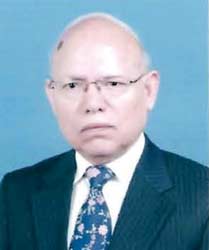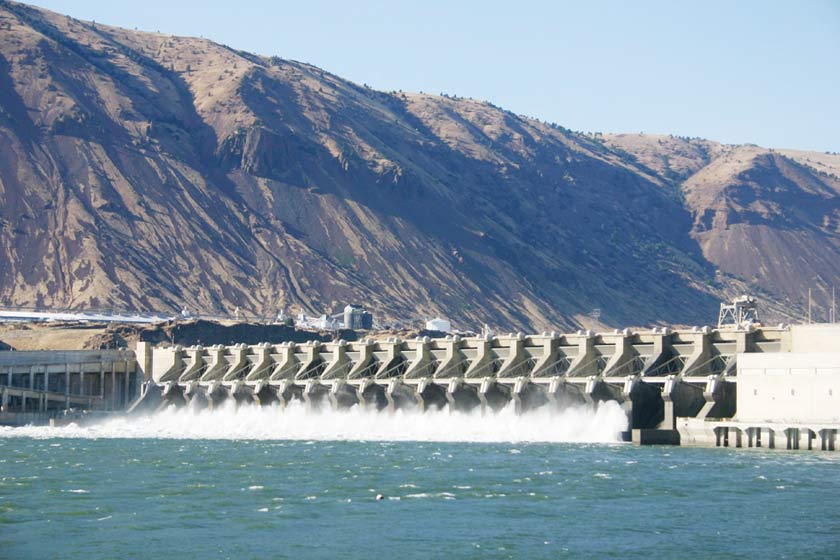Last week the Asian Development Bank (ADB) approved $1.8 million, including $1.5 million grant under Technical Assistance Special Fund,
Last week the Asian Development Bank (ADB) approved $1.8 million, including $1.5 million grant under Technical Assistance Special Fund, for preparation of a hydropower development plan for the Khyber Pakhtunkhwa (KP) province. The scope of studies conducted under this technical assistance will cover assessment of power sector, projected investment, regulatory framework and off-grid electrification policies. This certainly will provide impetus to the hydropower generation programme, which is being undertaken in the province both in public sector and through private investment, besides the public-private partnership mode adopted for large and medium size projects.
A net exporting province of electricity housing Tarbela, Warsak and other Water and Power Development Authority (Wapda) hydropower stations, KP has 256kWh per capita electricity consumption, one of the lowest, compared to that of 450kWh for the whole country, and still braces electricity load-shedding in all seasons. In the wake of persistent and long electricity load-shedding in the province and future demand projections, the KP government had announced “energy emergency plan” in the 2013-14 budget, having decided to initiate various hydropower, thermal, wind and solar power projects on fast-track basis to resolve the energy crisis in short-term and long-term periods.
 Nonetheless, the focus remained on developing hydropower generation on a large scale as the province is rich in water resources having a potential of developing additional 20,000MW hydropower subject to technical and economic feasibility. Consequently, the KP government has already formulated an investor-friendly hydropower policy to broaden its scope and aims to increase investment in the hydropower sub-sector. The Hydropower Policy 2016, which extends various new incentives to the prospective investors, and simplifies the procedure for sanction of the identified projects compared to the policy of 2006, is expected to be approved shortly by the provincial cabinet for earnest implementation by Pakhtunkhwa Energy Development Organisation (PEDO).
Nonetheless, the focus remained on developing hydropower generation on a large scale as the province is rich in water resources having a potential of developing additional 20,000MW hydropower subject to technical and economic feasibility. Consequently, the KP government has already formulated an investor-friendly hydropower policy to broaden its scope and aims to increase investment in the hydropower sub-sector. The Hydropower Policy 2016, which extends various new incentives to the prospective investors, and simplifies the procedure for sanction of the identified projects compared to the policy of 2006, is expected to be approved shortly by the provincial cabinet for earnest implementation by Pakhtunkhwa Energy Development Organisation (PEDO).
Today, total installed capacity for hydropower generation developed by the provincial government is around 105MW that also supplements power generation at national level. These power stations include Malakand-III (Dargai) 81MW and Pehur (Swabi) 18MW that are connected to the national grid, and Reshun 4.2MW and Shishi 1.8MW both in Chitral, which are stand-alone units to provide electricity to remote areas of the district. PEDO also acts as a utility company for remote rural localities. Powerhouses with capacity in the range of 0.1MW to 0.4MW each are located in Garam Chashma (Chitral), Kalam (Swat), Ashuran (Swat), Karora (Shangla), Damori (Shangla), Thall (Dir), Kaghan (Mansehra), and Duber, Keyal and Jalkot in Kohistan district. Most of these powerhouses have now been leased out to local entrepreneurs.
Government of KP is keen to be self-supportive and self-reliant in power generation through harnessing untapped hydropower potential optimally.
Resultantly, a large number of prospective sites have been identified, and technical and economic parameters defined, with the help of national and foreign consultants. The availability of high, medium and low water heads could economically develop hydropower projects, mainly run-of-the-river type, with some as daily storage projects. These projects are categorised as large, medium, small and mini/micro hydropower, which could be integrated with the national grid or connected to isolated grid stations or for stand-alone installations, depending on project size and the site characteristics.
A master plan has been devised for implementation, which is divided into short-term, medium-term and long-term plans. Three hydropower projects of a cumulative capacity of 56MW are in advanced stages of completion at a total cost of Rs12 billion. These are Daral Khwar (Swat) of 36.6MW, Ronalia (Kohistan) of 17MW and Machai-II (Mardan) of 2.6MW, which are scheduled to achieve commercial operations this year. Medium-term plan covers six projects of total capacity of 350MW, currently under various stages of implementation. These projects include Karora-II (Shangla) 11.8MW and Jabori (Mansehra) 10.2MW capacity, scheduled for completion by 2018, and Gorkin-Matiltan (Swat) 84MW, Lawi (Chitral) 69MW, Koto (Lower Dir) 40.8MW and Sharmai (Dir) 150MW, which are expected to achieve commercial operations by 2019. PEDO has recently awarded a contract to a China-Pak Joint Venture (Sichuan, Sarwar & Co, Silian and ChongQing) for construction of Koto hydropower project on turnkey basis at Rs12.6 billion. Technical and commercial bids for Gorkin- Matiltan project are scheduled for opening next month.
Despite poor law and order situation prevalent in the province till recently, the provincial government has attracted private investment too. Three powerhouses, namely Machai, Mardan (1MW), Khanpur Canal, Shangla (0.2MW) and Doar Khwar, Havelian (0.3MW) have been completed. Another 36 projects of cumulative capacity of over 100MW are being implemented in Mardan, Havelian, Malakand, Balakot, Shangla, Kohistan, Abbottabad and Hazara for which Letter of Interest (LOI)/Letter of Support (LOS) have been issued by PEDO.
Likewise, the Expression of Interest (EOI) have recently been received by PEDO from prospective investors for the development of another 17 small and medium hydropower projects, with an cumulative capacity of 2,516MW on Build, Operate, Own and Transfer (BOOT) basis through international competitive bidding (ICB).
These projects include 12MW Nandihar Khwar (Batgram), 188MW Naran (Mansehra), 96MW Batakundi (Mansehra), 300MW Balakot (Mansehra), 21MW Ghor Band (Shangla), 99MW Arkari Gol (Chitral), 64MW Mujigram-Shoghar, 72MW Istaru-Booni, 144MW Shushgai Zhendoli (Chitral), 132MW Shogisin (Chitral), 377MW Gahrit-Swir Lasht (Chitral), 350MW Tore More Kari (Chitral), 260MW Jamshile More Kari (Chitral), 230MW Laspur Marigram (Chitral), 102MW Shigokach (Dir), 47MW Kalkot Brikot Patrak (Dir) and 22MW Patrik-Shringal (Upper Dir). Feasibility studies of these schemes have already been prepared by PEDO.
Long-term plan, which spans over a period of ten-years, covers thirteen projects of 1,418MW costing Rs188 billion. Large hydropower projects are being promoted with private sector participation through the Private Power and Infrastructure Board (PPIB)/Government of Pakistan. PPIB has recently signed Implementation Agreement with the developers for Suki Kinari project of 870MW in Mansehra District, which is scheduled for completion by June 2020 with an estimated cost of $1.8 billion. Other projects under construction in private sector are 147MW Patrind (Mansehra), 215MW Asrit-Kedam (Swat), 157MW Madian (Swat) and 548MW Kaigah (Kohistan). In addition, projects being developed under public-private partnership are Lower Palas Valley (665MW) and Lower Spat Gah (496MW), associating WAPDA also. In addition, feasibility studies are under preparation for a number of hydropower schemes. Pre-feasibility studies for another ten projects in the range of 3MW to 25MW to be located in Dir, Chitral, Swat and Mansehra are being undertaken. Also, there are another 25 raw sites with potential of developing above 50MW projects, and some 60 schemes of below 50MW capacity.
Implementation of the KP Hydropower Master Plan within project costs and timeline will indeed result in providing adequate and affordable electricity to the province, thereby reviving industrial and commercial activities and promoting job opportunities, thus helping in raising quality of life in the foreseeable future.
The writer is former chairman of State Engineering Corporation